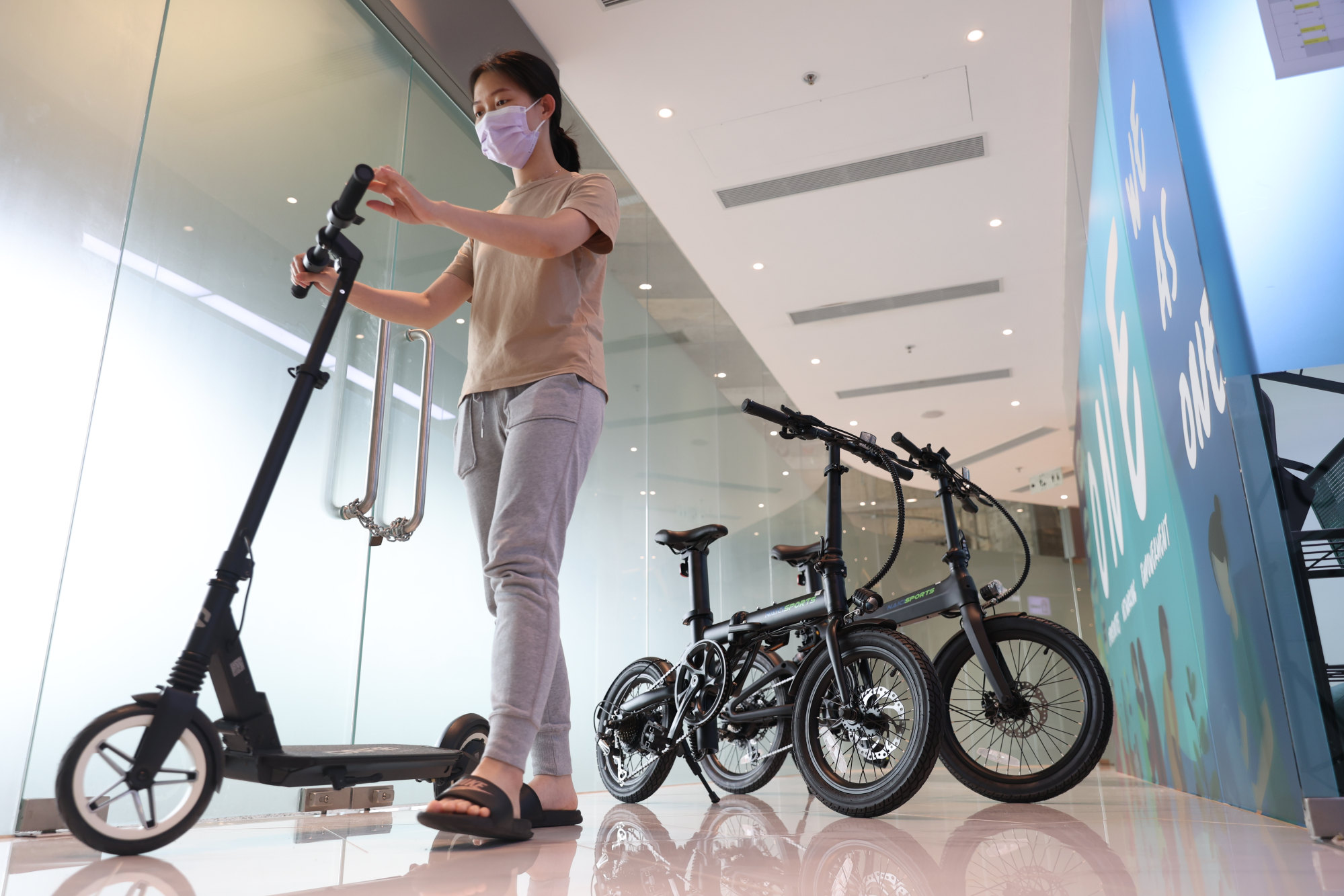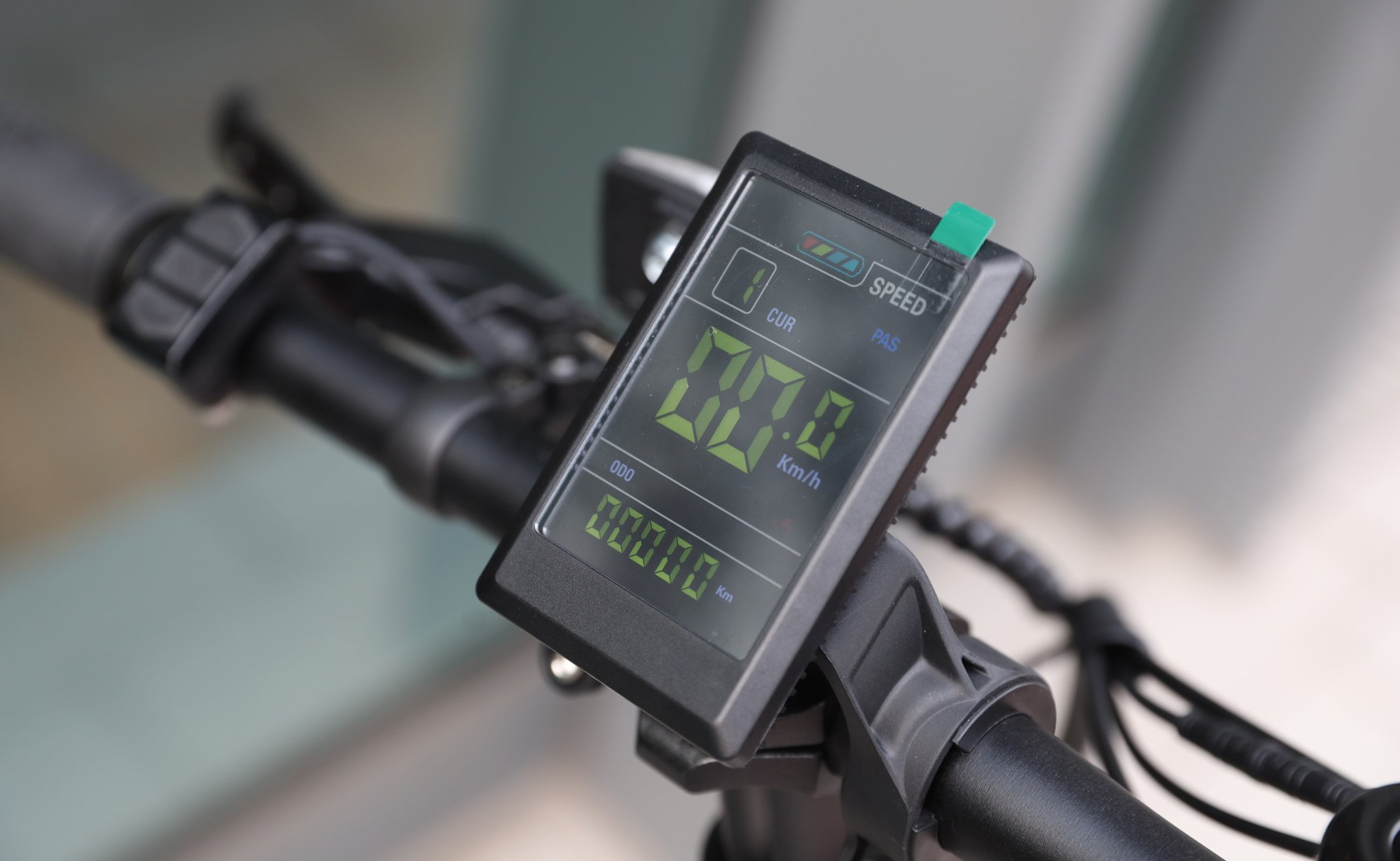
Hong Kong’s rules for allowing e-scooters on designated tracks are too strict, users say
- Trial allowing e-bicycles and e-scooters welcomed, but users urge rethink of weight of devices
- Some are disappointed hoverboards and unicycles aren’t included in trial despite growing popularity
Hong Kong’s community of electric mobility device users welcomed the government’s plan to allow e-bicycles and scooters on designated tracks but urged the authorities to ease some proposed rules.
They told the Post it was too strict to allow only e-bicycles and scooters that weigh less than 20kg (44.1lbs) and are no more than 65cm wide, with their maximum speed locked at 25km/h (15.5mph).
“I dare say 90 per cent of the current e-scooters used in Hong Kong do not meet the suggested requirements. They either weigh more than 20kg or do not have the speed limit locked,” said David Hui Kin-shun, chairman of the Hong Kong Portable Electric Vehicle Association.

“Users can send their devices back to manufacturers to lock the speed, but the weight is hard to alter.”
The Post reported earlier that e-bicycles and scooters will be allowed on cycle tracks in Tseung Kwan O and Pak Shek Kok in a trial, with restrictions on their speed, weight, exteriors and brakes.
They must be equipped with a white front light, a red rear light, a red reflector, an effective braking system and an alarm warning device, and their batteries must meet European Union safety standards.
Hong Kong set to give e-scooters green light in trial scheme covering 2 areas
“I was thrilled when I heard the news, especially because I have been involved in persuading the government for the past five years,” said Hui, a professional e-scooter athlete for more than 10 years who also runs an e-scooter company.
“The plan shows the government’s commitment to innovation and technology.”
But he felt that the proposed rules, drawn from the practice in other countries, were “very strict” and suggested revising the maximum weight to 25-30kg.
He said the battery added to the vehicle’s weight, and heavier batteries lasted longer.
Hui said e-scooters were timesavers and using one could shorten a 15-minute walk to just four or five minutes.

In Singapore, e-scooters, e-unicycles and hoverboards are allowed only on cycle tracks while e-bikes can also ride on roads, except for expressways and tunnels. Both devices must weigh up to 20kg and have a 25km/h speed limit. E-scooters cannot be wider than 70cm.
Riders in Singapore must be at least 16 years old and, before going on the road, have to register their e-scooters and e-bicycles and pass a theory test on rules and code of conduct for using the devices.
From July, Japan will allow e-scooters that are no more than 190cm long and 60cm wide, with a maximum speed of 20km/h.
Hong Kong had 1.16 million electronic mobility devices in 2018, according to official data.
Tommy Pun Wai-shan, 46, who sells e-scooters at his shop in Tuen Mun, said the government move was expected and might have come sooner if not for the Covid-19 pandemic.
Electric scooter rider fights for his life after hitting parked van in Hong Kong
He sold about 3,000 e-scooters each year before the pandemic arrived in early 2020, and around 1,000 a year since then.
“Buyers usually ride them in villages and mountain tracks, but many ride e-scooters not for convenience or fun, but to make a living,” he said, referring to delivery men in general.
The Transport Department told the Post it would report to the Legislative Council’s relevant panel on the progress of regulating e-mobility devices in the first half of this year.
Some enthusiasts were disappointed to learn that the trial would exclude hoverboards and unicycles, which had gained popularity in recent years.

Ringo Lee Yiu-pui, an adviser on the department’s electric mobility devices committee, told the Post earlier that they were left out because they usually had no brake systems or lights.
But Boris Yim Shing-yik, also a committee member, was puzzled that the two devices would be left out as they had been part of the committee’s discussions all along.
A former licensed e-scooter test driver, he said e-hoverboard and unicycles usually had magnetic brakes, and their users were usually “more competent” than e-scooter riders.
“They are able to stop their devices in time when obstacles appear,” he said.
He suggested adding a theory test for hoverboard and unicycle users to check that they were qualified to operate the devices. The government proposal does not include a test for users of any e-vehicles.
Disappointed that unicycles had been left out of the trial, Margaret Ho, adviser of the Electric Unicycle Sports Association of Hong Kong, China, said the device did not need additional brake systems and was equipped with front and rear lights.
Hong Kong’s fire services roll out first electric motorcycles for 5-month trial
“With proper training and practice, and restricting users to designated tracks, there should not be a danger to riders, pedestrians and others,” she said.
Her association, set up five years ago, has seen growing interest in unicycles and its annual competitions attract participants aged 18 to 70.
“Not legalising the device does nothing good for the city’s goal to cut carbon emissions and build a smart city,” she said. “It also deals a blow to enthusiasts and the momentum to turn unicycle-riding into a sports event.”
Although she agreed in principle to a theory test for hoverboard and unicycle users, she said that should come only after the government allowed training for them.
“If there is no standardised training, how could they pass a theory test,” she asked.

